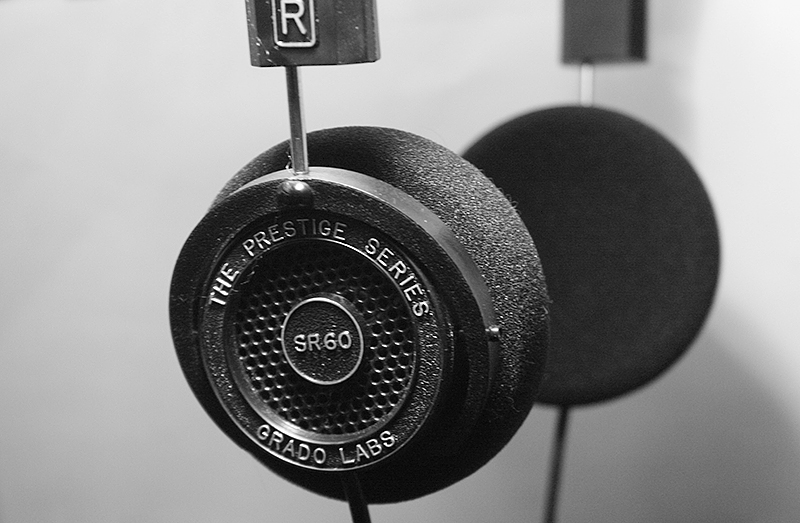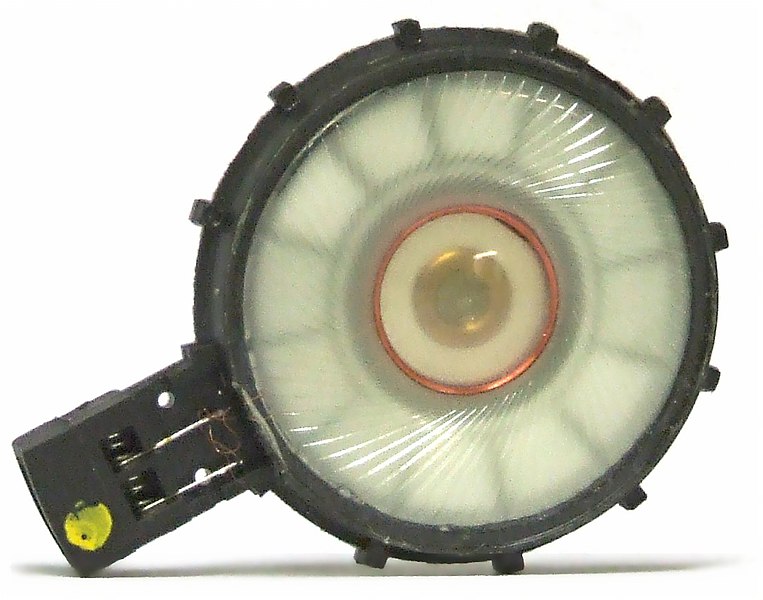Headphones
History
Headphones originated from the earpiece, and were the only way to listen to electrical audio signals before amplifiers were developed. The first truly successful set was developed by Nathaniel Baldwin, who made them by hand in his kitchen and sold them to the United States Navy.
Some very sensitive headphones such as those manufactured by Brandes
around 1919 were commonly used for early radio work. These early
headphones used moving iron drivers, either single ended or balanced armature. The requirement for high sensitivity meant no damping was used, thus the sound quality
was crude. They also had very poor comfort compared to modern types,
usually having no padding and too often having excessive clamping force
to the head. Their impedance varied; headphones used in telegraph
and telephone work had an impedance of 75 ohms. Those used with early
wireless radio had to be more sensitive and were made with more turns of
finer wire; impedance of 1,000 to 2,000 ohms was common, which suited
both crystal sets and triode receivers.
In early powered radios, the headphone was part of the vacuum tube's plate
circuit and had dangerous voltages on it. It was normally connected
directly to the positive high voltage battery terminal, and the other
battery terminal was securely grounded. The use of bare electrical
connections meant that users could be shocked if they touched the bare
headphone connections while adjusting an uncomfortable headset.
Electrical characteristics
Electrical characteristics of dynamic loudspeakers may be readily applied to headphones since most headphones are small dynamic loudspeakers.Impedance
Headphones are available with low or high impedance (typically measured at 1 kHz). Low-impedance headphones are in the range 16 to 32 ohms and high-impedance headphones are about 100-600 ohms. As the impedance of a pair of headphones increases, more voltage but less current is required to drive it, and the loudness of the headphones for a given voltage decreases. In recent years, impedance of newer headphones has generally decreased to accommodate lower voltages available on battery powered CMOS-based portable electronics. This results in headphones that can be more efficiently driven by battery powered electronics. Consequently, newer amplifiers are based on designs with relatively low output impedance.The impedance of headphones is of concern because of the output limitations of amplifiers. A modern pair of headphones is driven by an amplifier, with lower impedance headphones presenting a larger load. Amplifiers are not ideal; they also have some output impedance that limits the amount of power they can provide. In order to ensure an even frequency response, adequate damping factor, and undistorted sound, an amplifier should have an output impedance less than 1/8 that of the headphones it is driving (and ideally as low as possible). If output impedance is large compared to the impedance of the headphones, significantly higher distortion will be present. Therefore, lower impedance headphones will tend to be louder and more efficient, but will also demand a more capable amplifier. Higher impedance headphones will be more tolerant of amplifier limitations, but will produce less volume for a given output level.
Historically, many headphones had relatively high impedance, often over 500 ohms in order to operate well with high impedance tube amplifiers. In contrast, modern transistor amplifiers can have very low output impedance, enabling lower impedance headphones. Unfortunately, this means that older audio amplifiers or stereos often produce poor quality output on some modern, low impedance headphones. In this case, an external headphone amplifier may be beneficial.
Sensitivity
Sensitivity is a measure of how effectively an earpiece converts an incoming electrical signal into an audible sound. It thus indicates how loud the headphones will be for a given electrical drive level. It can be measured in decibels of sound pressure level per milliwatt, or dB SPL/mW, which may be abbreviated to dB/mW. The sensitivity of headphones is usually between about 80 and 125 dB/mW.Headphone sensitivity may be measured in dB/mW or dB/mV. These are dB SPL (sound pressure level) measured in a standard ear for a 1 kHz sinusoidal headphone input of either 1 milliwatt or one millivolt. One can convert between these two units if the impedance of the earpiece is known.
Types
The particular needs of the listener determine the choice of headphone. The need for portability indicates smaller, lighter headphones, but can mean a compromise in fidelity. Headphones used as part of a home hi-fi do not have the same design constraints and can be larger and heavier. Generally, headphone form factors can be divided into four separate categories: circumaural, supra-aural, earbud, and in-ear.












.jpg)






0 comments:
Post a Comment